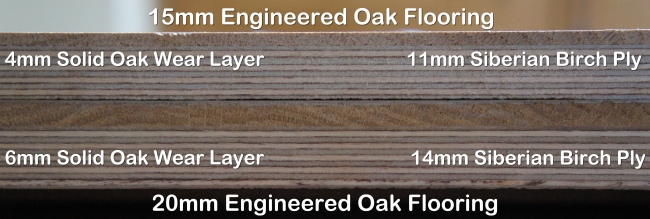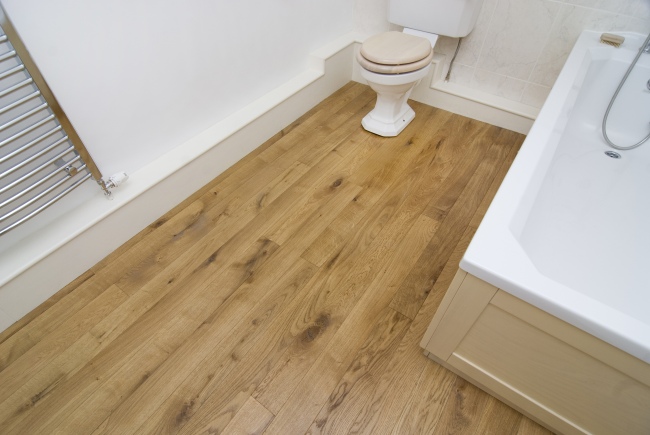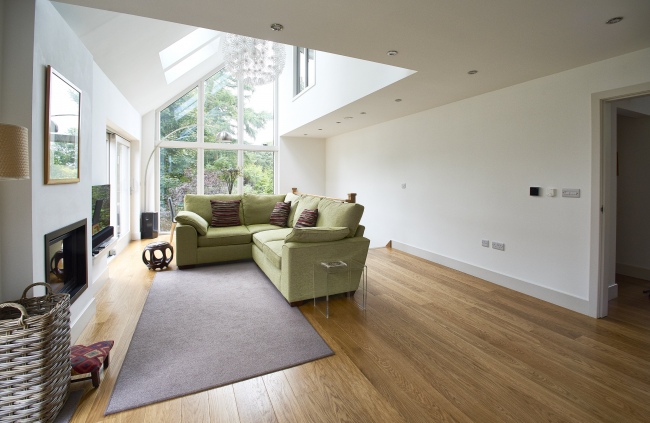15mm or 20mm Engineered Oak Flooring?
13th Mar 2017
Recently we launched a range of engineered oak flooring boards in a thickness of 15mm; in addition to our 20mm boards, which we have offering for some time. So with this new option which should you use? 20mm or 15mm engineered oak flooring?
From above, when opting for the same grade, width and finish combination, there is no difference whatsoever between our 15mm and our 20mm engineered oak flooring. The only difference is the thickness. Our 20mm engineered oak flooring boards consist of a 6mm solid wear layer, which is bonded to 14mm of Siberian birch ply. The 15mm engineered oak flooring boards are made up of a 4mm solid oak wear layer and 11mm of Siberian birch plyboard.

The thinner board obviously results in a compromise on what makes up the engineered oak board. In comparison to the 20mm boards the wear layer of the solid oak is thinner, and the ply board base is thinner.

Engineered oak flooring is designed to be laid in areas where solid oak flooring would not be suitable. Engineered boards are much less susceptible to movement caused by changes in humidity in comparison to solid oak boards. This allows engineered oak flooring to be laid in the likes of kitchens, bathrooms, conservatories, over a concrete subfloor, or where underfloor heating has been fitted.
Engineered oak flooring can be laid in all of the same ways a solid oak floor can. Boards can also be glued down using a flexible flooring adhesive - such as the Soudal MS-30 Plus Adhesive. 20mm engineered oak flooring boards can also be laid as a floating floor (glueing the tongue and grooves of each board, over a form of underlay). If you intend use the floating floor method, we recommend 20mm engineered oak flooring over 15mm engineered oak flooring.
Our thinner 15mm engineered oak flooring boards are for laying in areas where a thicker board would not be suitable - such as an area with limited room height. These boards should be laid areas with a solid base; such as a concrete or a timber subfloor.

The main advantage of opting for a 20mm over a 15mm board is of course the thicker cut - which enables a thicker plyboard/oak combination. These thicker boards can be laid in just about any situation, in a range of different ways. On the other hand, the 15mm thick boards are perfect for areas where room height is limited, whilst still incorporating all of the advantages of an engineered oak floor.




Add a comment